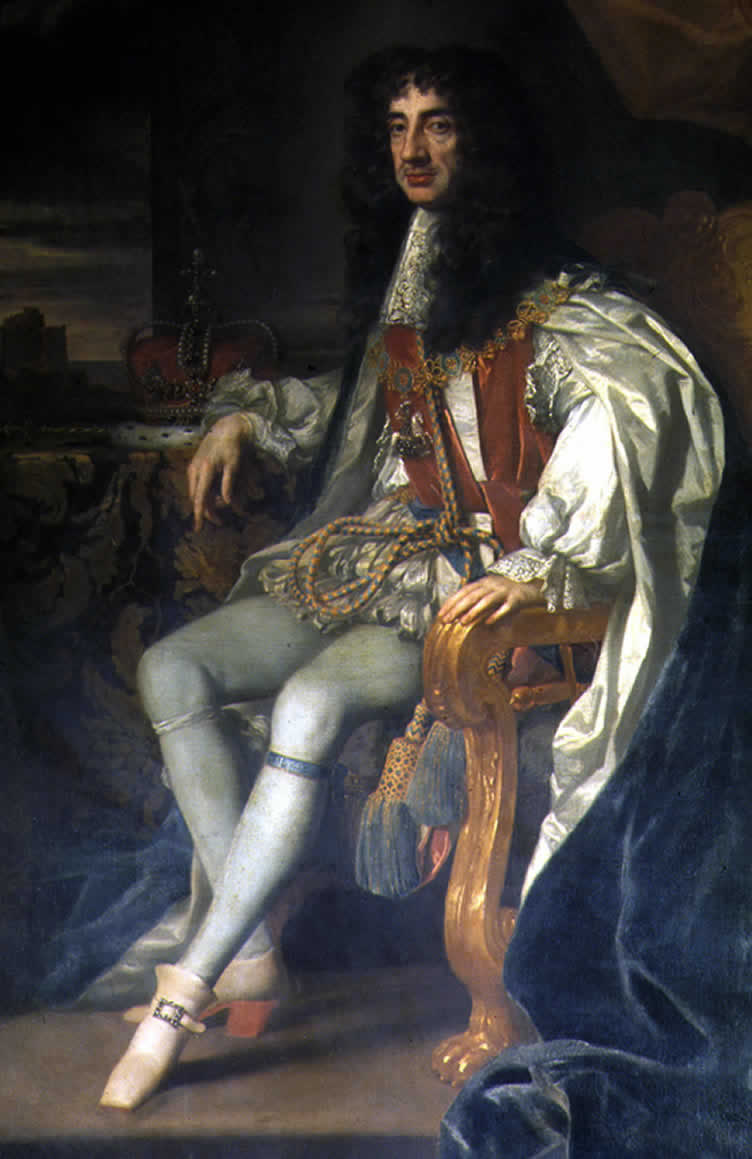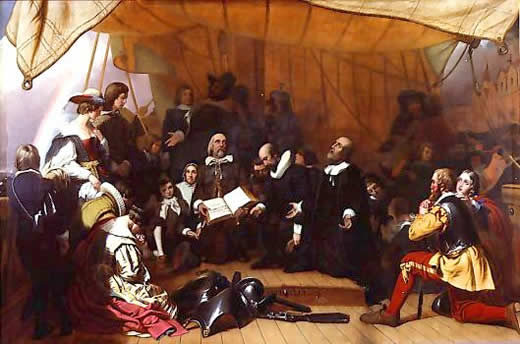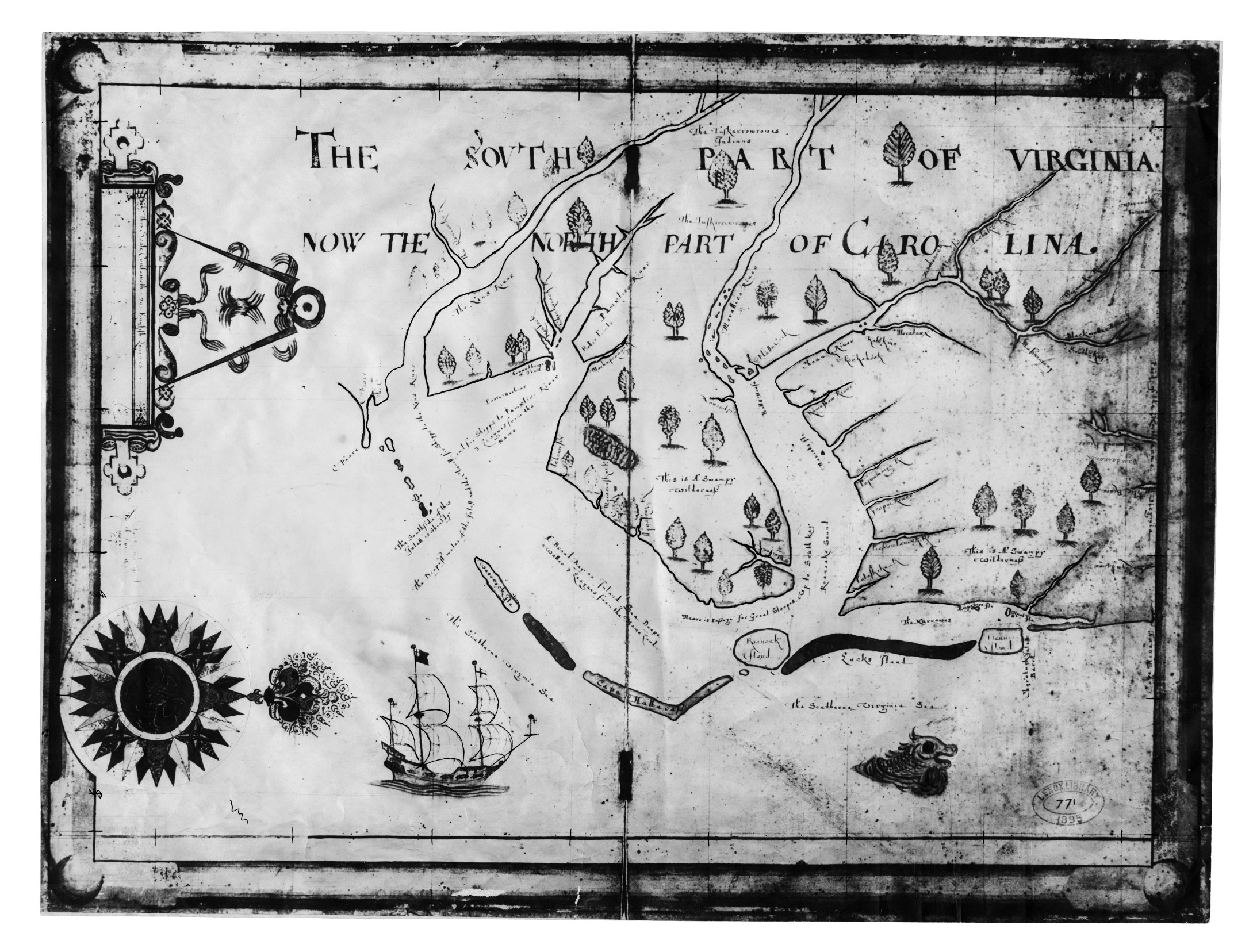England in the 1600s was in turmoil.
Since Henry VIII broke with the Catholic Church in 1534 and established the Church of England, Protestants and Catholics had struggled for power in England. In that time, "religious freedom" as we know it did not exist. It was assumed that each nation would have a single religion, that the official church of the realm would be supported through taxation, and that people would be compelled to worship under the beliefs and practices of that sect. People who refused to conform were persecuted -- they could be barred from public life, be imprisoned, have their property confiscated, or in extreme cases even be put to death. And since the king was head of the church in England, his personal religious views made a tremendous difference in the lives of his subjects. The struggle between England's Catholics and Protestants was for high stakes.
Elizabeth I, who ruled from 1558 to 1603, established Protestant rule, but because she never married she died without an heir, and James, the son of her Catholic cousin Mary, Queen of Scots, became king. James I, who had been raised as a Protestant, continued the persecution of Catholics, but not consistently or harshly enough to satisfy many Protestants. James' son Charles I married a Catholic princess and endorsed changes to the Church of England that brought it closer to Catholicism.
Elizabeth had also strengthened the power of the monarchy. The English people accepted her strong rule because she ruled well, and was extremely popular. But James and especially Charles were less successful and less popular. When Charles I tried to add to his own power, Parliament fought him.
Eventually, civil war broke out. Supporters of Parliament, led by Puritans, raised an army, defeated the king's forces, and executed him in 1649. The Puritans believed in a radically simple form of worship and an equally simple form of government. In place of the monarchy, they established a commonwealth -- a republic ruled by an elected Parliament. But the civil war led to chaos, with factions continually fighting one another. For a time, England was ruled by a "Lord Protector," Oliver Cromwell -- essentially, a military dictator.
After Cromwell died, a royalist army forced Parliament to dissolve, and the newly elected Parliament invited Charles's son, who was in exile in Europe, to take the throne as Charles II. Even many people who had supported Parliament were relieved to have the chaos of the civil wars over with. The return of the king was called the Restoration -- the rightful resumption of royal rule -- and Charles II was called the "Merrie Monarch" because the Puritans had been so dour, dressing in black and tightly enforcing public morality.
Virginia on its own
Meanwhile, in America, the colony of Virginia grew slowly. During Cromwell's reign, many supporters of the king -- called Cavaliers -- fled England for Virginia. Because Virginia recognized Charles II as king immediately after his father was executed, Charles II supposedly referred to Virginia as his "old dominion" -- a nickname still used today.
Hunger for land
By the 1660s, two changes had taken place in Virginia that led to the first permanent white settlements in North Carolina. Virginia's population began to grow, while its available land became scarcer.
Virginia's population rose not because it received more immigrants, but because colonists began living longer. Until about 1640, disease killed more than half of all immigrants to Virginia -- many during their first summer in the colony! Shallow wells carried bacteria that caused typhoid fever; a lack of fresh fruit contributed to scurvy; and many immigrants, weak from their long journey, arrived in the summer when disease was worst. By the 1650s, conditions improved, and death rates began to fall.1
With as many as a thousand immigrants a year still arriving, Virginia's population began to grow rapidly. Many of these immigrants were indentured servants -- men and women who paid for their transportation to America by agreeing to work for someone for a period of time, usually four to seven years. When death rates were high, few servants survived their period of indenture. By mid-century, most survived to become free men (or, less often, women) who wanted farms and households of their own.
At the same time, though, land was becoming scarce. Early in Virginia's history, when its population was small, land was cheap, but the labor to work it was expensive. Successful planters who made money growing tobacco could use their profits to invest in cheap land. Although they might not be able to afford servants or laborers to farm the land they bought, by the middle of the seventeenth century, the wealthiest Virginians had accumulated enormous tracts of land.
Successful planters could also accumulate land through headrights. To encourage settlement, Virigina's officials granted fifty acres of land to each new arrival (each "head"). In theory, headrights gave immigrants a start in their new land. In practice, though, headrights were actually granted to the person who paid for the immigrant's transportation -- which meant that wealthy planters kept the land granted for their indentured servants.
South into Albemarle
In the 1650s, Virginians who wanted land began moving south into the region around Albemarle Sound. Although King Charles I had granted that land to his attorney general, Sir Robert Heath, in 1629, the civil war prevented Heath from establishing a colony there. Virginia officials couldn't control the region, either, because it was so far from the center of Virginia's government at Jamestown. As a result, the Albemarle became a haven for runaway servants and debtors, and settlers there didn't pay any taxes.
Nathaniel Batts was the first permanent settler on the Albemarle Sound -- at least the first one we know about. In 1655, he had a house built for himself, twenty feet square, with two rooms and a chimney -- a good-sized house for that time and place. Batts traded with local Indians and seems to have become an important man in the region as settlement grew. When George Fox, founder of the Society of Friends, or Quakers, visited Albemarle in 1672, he met Batts and wrote that he had been -- unofficially, we assume -- "Governor of Roanoak." Batts' house was important enough as a trading post that it appeared on a 1657 map of "The South Part of Virginia." 2 But Fox also described Batts as a "rude, desperate man," and he doesn't seem to have been very prompt about paying his debts: The men who built his house had to sue him for payment.
By 1663, as many as five hundred white settlers lived in the Albemarle region. 3 To get control of the region, Virginia tried to set up a government there in 1662. But the newly restored King Charles II was making other plans for the region.
Turning back the clock in Carolina
When Charles II took the throne in 1660, he wanted to reward men who had stayed loyal to him during his exile. Eight of them requested land in America and received a huge tract of land: all the land between 31ø and 36øN from the Atlantic to the Pacific Ocean. Two years later, the grant was extended to include the Albemarle region already settled by Virginians as well as additional territory south into Florida -- including the Spanish town of St. Augustine. Charles I had named the region Carolana, after the Latin form of his own name; his son now renamed it Carolina.
A proprietary colony
The eight men to whom Carolina was granted were called Lords Proprietors. The idea of a proprietary colony -- a colony owned by one or a few people -- is a strange one today. Under the Charter of Carolina, not only were the Lords Proprietors the owners of Carolina, but they were to rule everyone else living there! England, after all, was a monarchy, ruled by a king. Although the people and nobles of England had a say in their government, through Parliament, Parliament convened only when the king called it, and kings could rule for years at a time without calling a Parliament. (Charles II ruled without Parliament from 1679 until his death in 1685.)
Much of English law regarding people's rights and privileges, and especially the way land could be held, bought and sold, and inherited, was still based on the feudal system of the Middle Ages. Under the feudal system, everyone was subject to a higher lord, in a chain that led from the lowest agricultural workers all the way to the king. Political and military power in this system came from above -- ultimately, from the king -- rather than from the people.
In this context, a proprietary colony starts to make sense. The Lords Proprietors were granted an extreme form of feudal lordship over Carolina, and settlers would be subject to them just as the proprietors themselves were subject to the king. The Lords Proprietors ruled Carolina in the king's name. They could pass laws with the assent of a legislative body (like a mini-Parliament), establish towns and ports, tax residents, raise armies, and make war on enemies.
The Lords Proprietors expected to make a great deal of money from their new colony. Land in Europe was scarce, and they planned to sell land in Carolina to Europeans who had money but no land. They would collect quitrents on all this land -- essentially a form of real estate tax. They also expected profits from products such as whale oil, wines, indigo, sugar, and cotton that Europeans wanted to buy.
The Fundamental Constitutions
The Lords Proprietors tried several times to set out rules for governing their colony. In 1669, they adopted the Fundamental Constitutions of Carolina, a long document that turned out to be far too complicated for the relatively wild conditions of Carolina -- as you might guess if you try to read it.
Through the Fundamental Constitutions, the Lords Proprietors tried to set up a feudal society in Carolina, complete with hereditary nobility. English law prevented them from granting titles already in use in England, such as Earl or Baron. Instead, the Lords Proprietors created two new titles, cazique and landgrave, that would be passed down from father to son. (Christoph von Graffenried, the founder of New Bern, was made a landgrave.) Titles might help to lure wealthy men to Carolina, and they gave the colony an air of legitimacy -- they made it seem like less of a backwater. Two-thirds of the colony, in fact, was to be owned by the Lords Proprietors and the aristocracy they created.
At the other end of the social scale, the Fundamental Constitutions established hereditary serfs, called leetmen who would be legally tied to the land they worked -- as would their children. Like slaves, serfs had to work for their master -- the lord of the manor on which they lived and worked -- and could not leave without his permission, although serfs or leetmen also had certain rights guaranteed to them. The Fundamental Constitutions also provided for slavery, the outright ownership of one person by another.
Not surprisingly, free men and women in England did not volunteer to migrate to Carolina to become serfs. But other provisions of the Fundamental Constitutions established the more liberal society that would take root in Carolina.
Here, "liberal" doesn't mean what it means today -- most of the positions taken by politicians of either party today would have been completely foreign to people of the seventeenth century. Liberal in the colonial era described laws or beliefs that encouraged individual freedom, private ownership of property, democratically elected legislatures, and religious tolerance.
The Fundamental Constitutions provided for an assembly, or legislature, that was elected by the people of Carolina. Only men who owned land could vote or hold office, but that was true in England as well, and men needed less land to be eligible to vote in Carolina than they did in England. (Women could not vote anywhere in Europe or European America at this time.) And although the Church of England was the official church of Carolina and was to be supported by tax money, dissenters -- people who did not belong to the Church of England -- could vote and hold office in Carolina, even though they could not in England.
Trouble from the start
Running a colony -- particularly the colony of Carolina -- turned out to be more difficult and more complicated than the Lords Proprietors expected. Their grand ideas didn't suit the rough men and escaped servants who had already settled the Albemarle, and the Fundamental Constitutions were never fully put into effect.
Settlements were too scattered even to have a single government. The settlements in the Albemarle, on Cape Fear, and around what would become Charleston each needed its own government, with a governor appointed by the Lords Proprietors, a council who advised the governor (serving the combined roles of the Senate and President's Cabinet today), and a legislative assembly elected by landowners.
In order to govern Carolina effectively, the Lords Proprietors needed to take an active role in its affairs, but it seems that they were more interested in the idea of having a colony -- and in the money they could make from it -- than in the day-to-day matters of governing it. In less than twenty years, the conflict between the Lords Proprietors' grand ideas and the personalities of the rough and unruly men who settled Carolina would explode into open rebellion.
- 1. Morgan, Edmund S., American Slavery, American Freedom: The Ordeal of Colonial Virginia (1975: W. W. Norton & Company), 168-170 and 180-184. See WorldCat.
- 2. Cumming, W. P., "The Earliest Permanent Settlement in Carolina," in The American Historical Review 45:1 (Oct. 1939).
- 3. Powell, William S., North Carolina through Four Centuries (Chapel Hill: University of North Carolina Press, 1989), 52. See WorldCat.



